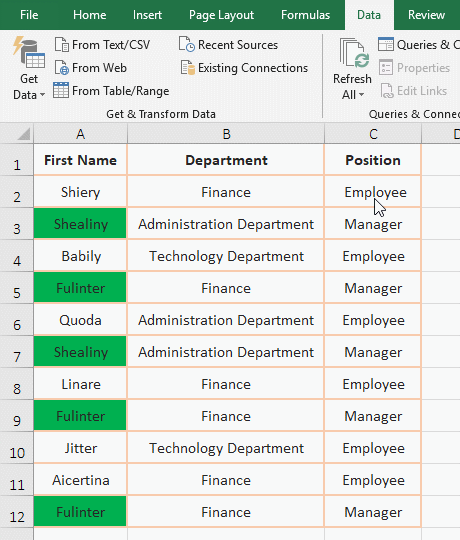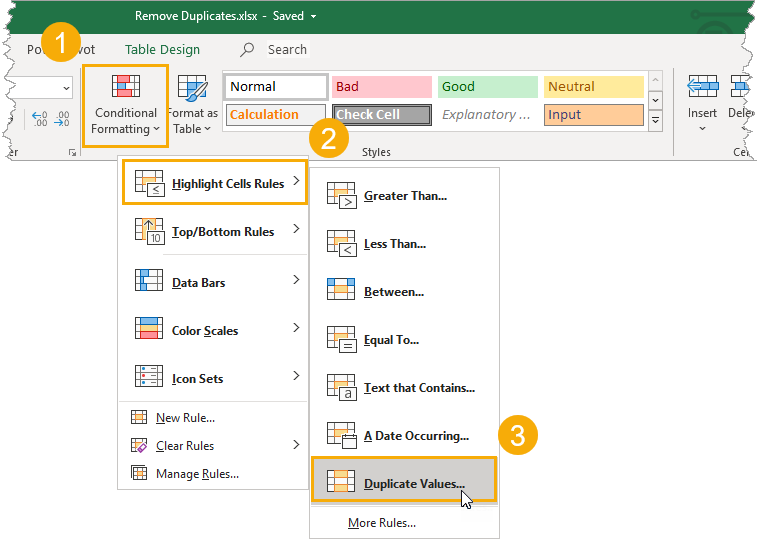

This method automatically assumes that there are headers in your table. In this case, two were left because the first duplicates were found in row 1. Once you click on “OK,” your document should have all duplicates except one removed. Now you will need to select the “Unique records only” check box. If you are using excel 2003, click on the “Data” drop down menu then “Filters” then “Advanced Filters…” In order to sort your spreadsheet, you will need to first select all using “Control” and “A” as shown earlier.Īfter selecting your table, simply click on the “Data” tab and in the “Sort & Filter” section, click on the “Advanced” button as shown below.

Let us start again by opening up the Excel spreadsheet. The second tool you can use in Excel to Identify and delete duplicates is the “Advanced Filter.” This method also applies to Excel 2003. In this case, all the rows with duplicate information except for one have been deleted and the details of the deletion are displayed in the popup dialog box. Now that the entire table is selected, you just press the “OK” button to delete all duplicates. Once you have done that, you will notice that the whole table has been highlighted again and the “Columns” section changed from “duplicates” to “Column A, B, and C.” In this case, we do not have any headers since the table starts at “Row 1.” We will deselect the “My data has headers” box. The reason for this is that the “My data has headers” box is ticked. You will notice that the first row has automatically been deselected. The “Advanced” filter option in Excel is the answer to this problem.Once you have clicked on it, a small dialog box will appear. The solution is to first remove the genuinely duplicate rows and then focus on the duplication with specific columns. Two different persons may have the same name. People have multiple phone numbers or email ids. In fact, in some cases, data may even be merged. Based upon what we find, we will use our discretion to decide which row to keep and which one to remove. If duplicates are found, we want to VISUALLY compare the contents of the other two columns – Phone Number and Status. For example, in the data below, we want to check for duplication with the Name and Training Program columns only.
Delete duplicate cells in excel for mac code#
For example, Name and Phone Number or Email id or Product code and Quantity, and so on. What most of us want is to check for duplication based upon some specific columns. Therefore, there is no need to look at those rows and check what is being deleted. Remove Duplicates option of Excel removes rows which have EXACTLY SAME data in all columns. That is called innovation – using two existing things to create a new benefit! Even if you know both features, you will not think of combining them.

But we rarely click on the Advanced Filter button. In most cases we have seen the Remove Duplicates feature of Excel. Once you understand the set of available features, you can combine them to get what you want. The solution requires little more effort. This is probably the best example of this mismatch. What we want and what we expect from Excel may not match. I got a query from my good friend Dennis Ser from Digi, Malaysia. Scan this code and watch the video on your mobile phone and try it out on your laptop.ĭownload the sample file if you want to try it out yourself. Most of us want to “see” the duplication. The default option removes the duplicate rows automatically. Watch this five minute video to understand what we “really” mean by Remove Duplicate Rows in Excel.


 0 kommentar(er)
0 kommentar(er)
